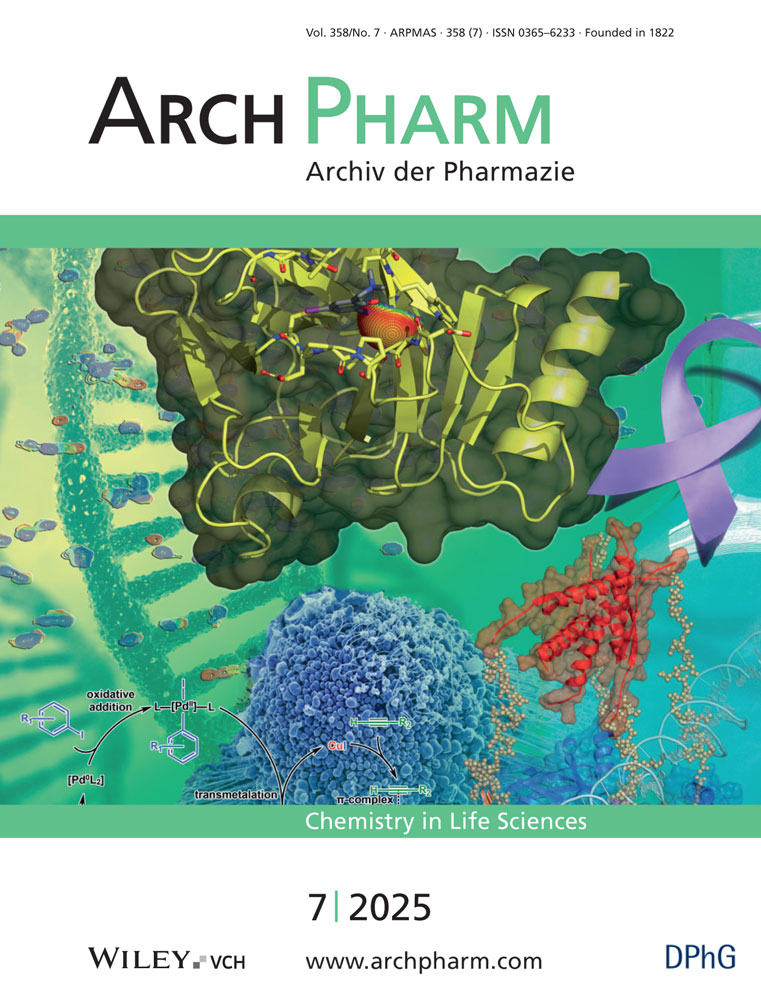Azines and Diazines as Potential Histamine H3-Receptor Antagonists†
Presented in part at the 2nd European Congress of Pharmaceutical Sciences, Berlin (Germany), Sept. 29–Oct. 1, 1994.
Abstract
enIn search of structure-activity relationships among histamine H3-receptor antagonists the imidazole ring of known H3-receptor antagonists was replaced by different heteroaromatic ring systems. Thus, azines and diazines with ether (6–13) and carbamate (15–24) moieties as functional groups were synthesized. The obtained compounds did not show significant H3-receptor antagonist activity in vitro (rat brain cortex) or in vivo (mice brain). The new compounds were also screened for H1-receptor antagonist activity on the isolated guinea-pig ileum and for H2-receptor antagonist activity on the isolated spontaneously beating guinea-pig right atrium. The substances showed only weak antagonistic activity at both histamine receptors, H1 and H2.
Abstract
deAzine und Diazine als potentielle Histamin-H3-Rezeptorantagonisten
Im Rahmen von Untersuchungen von Histamin-H3-Rezeptorantagonisten wurde der Imidazolring bekannter H3-Rezeptorantagonisten gegen verschiedene heteroaromatische Ringsysteme ausgetauscht. Es wurden Azine und Diazine mit Ether- (6–13) und Urethanstrukturelementen (15–24) als funktionelle Gruppen synthetisiert. Die dargestellten Substanzen zeigten in vitro (Zerebralkortex der Ratte) und in vivo (Mäusehirn) keine bedeutsame H3-antagonistische Aktivität. Die neuen Verbindungen wurden auch auf H1-antagonistische Aktivität am Meerschweinchendünndarm und auf H2-Antagonismus am isolierten, spontan schlagenden rechten Vorhof des Meerschweinchens getestet. Die Substanzen zeigten an H1- und H2-Rezeptoren nur schwache antagonistische Aktivität.




